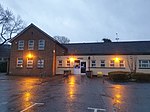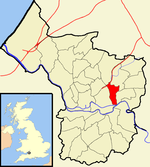Stapleton Road
Streets in BristolUse British English from December 2017

Stapleton Road is a major thoroughfare in the English city of Bristol, running through the districts of Lawrence Hill and Easton. It is known for being very culturally diverse with many esoteric shops. However since the mid 20th century it has gained a reputation for having a high crime rate.
Excerpt from the Wikipedia article Stapleton Road (License: CC BY-SA 3.0, Authors, Images).Stapleton Road
Saint Mark's Road, Bristol Easton
Geographical coordinates (GPS) Address Nearby Places Show on map
Geographical coordinates (GPS)
| Latitude | Longitude |
|---|---|
| N 51.466 ° | E -2.568 ° |
Address
Saint Mark's Road
Saint Mark's Road
BS5 0LN Bristol, Easton
England, United Kingdom
Open on Google Maps








